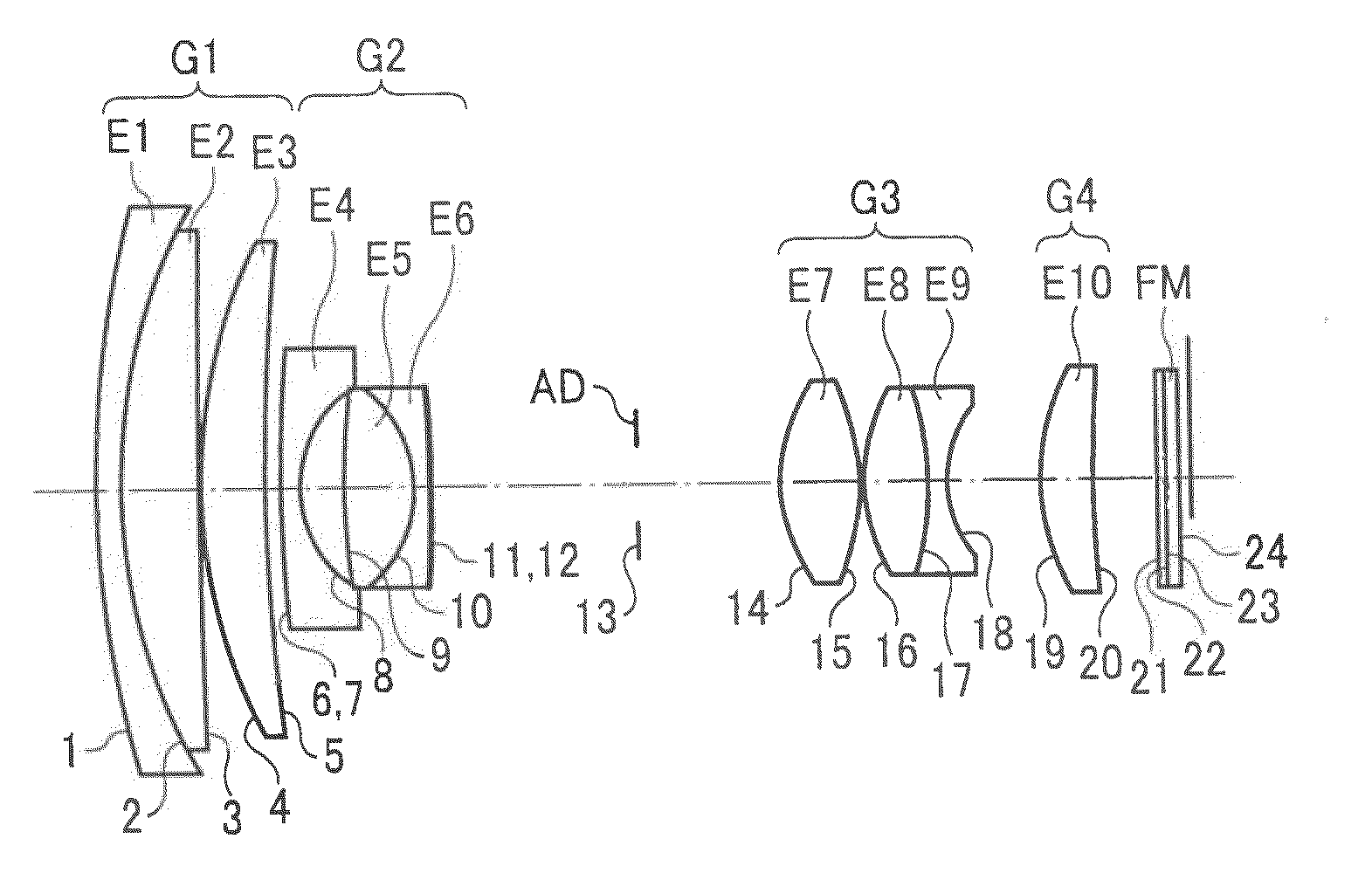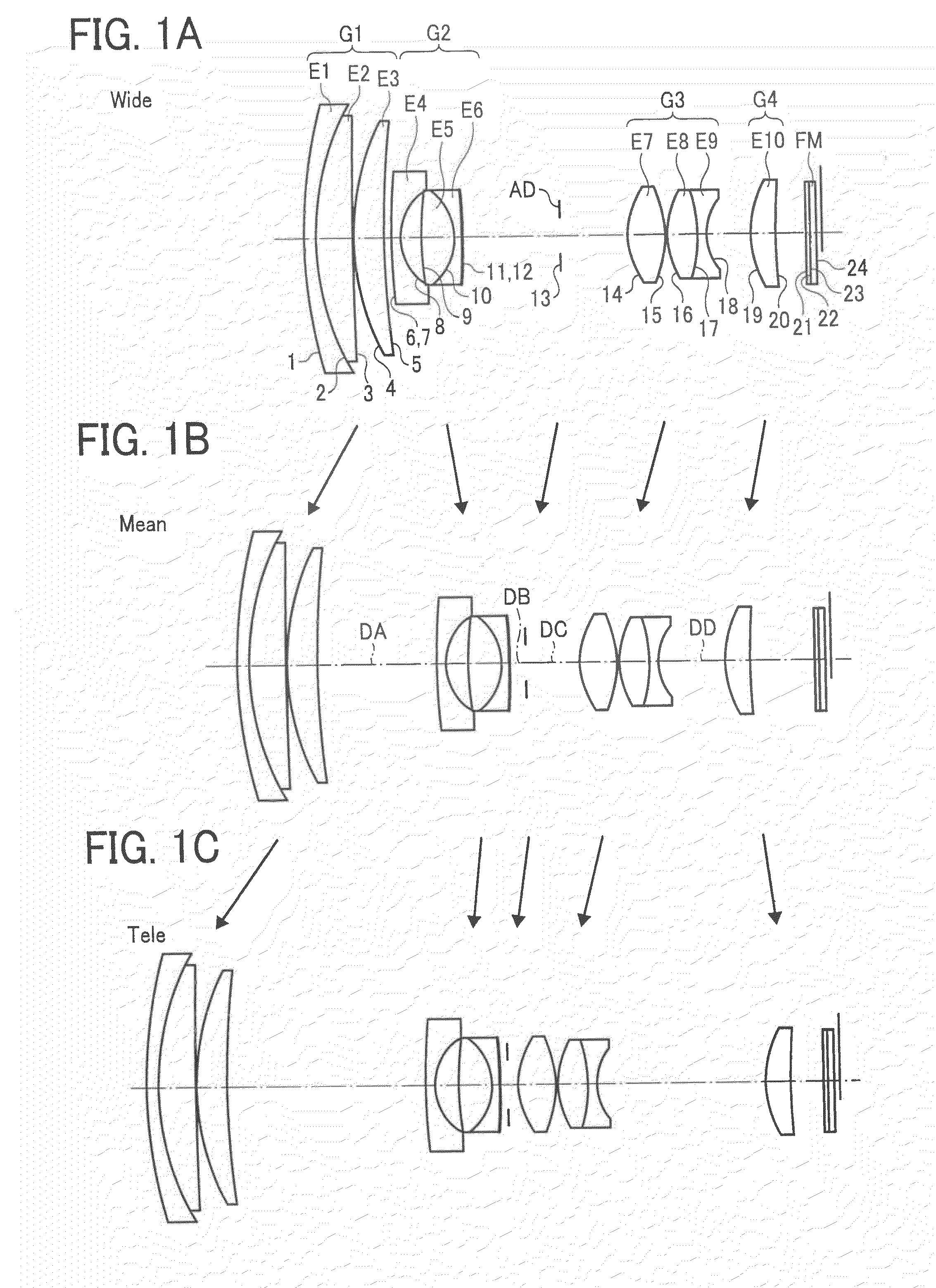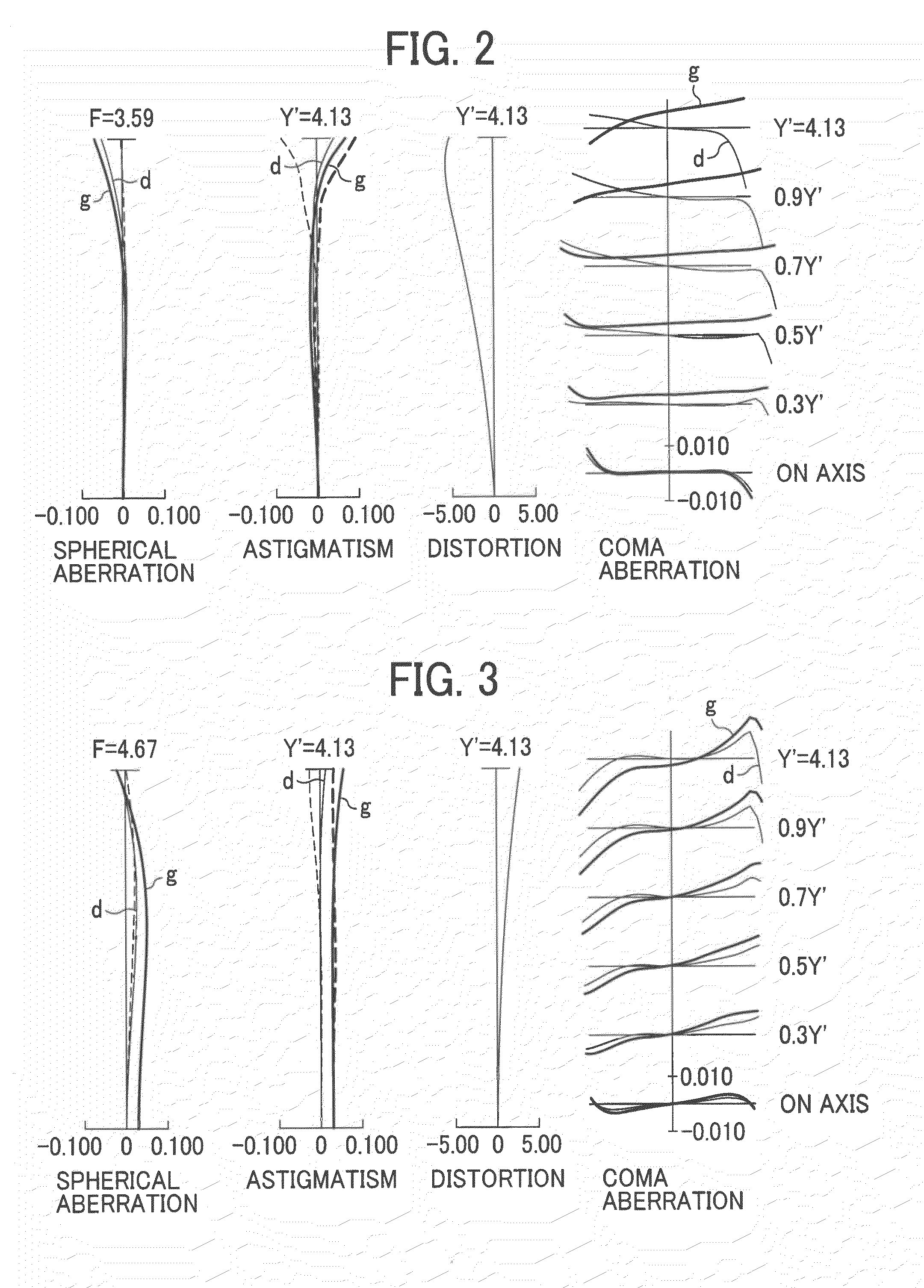Zoom lens and information device
a technology of information device and zoom lens, which is applied in the field of zoom lens, can solve the problems of reducing a total thickness, reducing a size of camera, and a zoom lens having five or more lens groups is not suitable for a small size camera, and achieves the effect of high magnification ratio, less aberration, and high performance photographing function
- Summary
- Abstract
- Description
- Claims
- Application Information
AI Technical Summary
Benefits of technology
Problems solved by technology
Method used
Image
Examples
first embodiment
[First Embodiment]
[0080]Hereinafter, a zoom lens and an information device according to a first embodiment of the present invention will be explained in detail with reference to accompanying drawings. At first, fundamental embodiments of the present invention will be explained.
[0081]The zoom lens according to one embodiment of the present invention includes a first lens group having a positive refractive power, a second lens group having a negative refractive power, a third lens group having a positive refractive power, and a fourth lens group having a positive refractive power, which are disposed in order from an object side to an image side, and an aperture stop disposed at an object side of the third lens group. In the zoom lens, in which when changing the magnification of the zoom lens from a wide angle end to a telephoto end, an interval between the first and second lens groups increases, an interval between the second and third lens groups decreases, and an interval between th...
example 5
[0196]FIG. 17A to 17C are schematic views of lens configurations of the zoom lens according to the example 5 of the first embodiment of the present invention on a zooming trajectory when zooming from a wide angle end to a telephoto end via a predetermined intermediate focal length position, that is, FIG. 17A is a schematic sectional view of the zoom lens at the wide angle end, FIG. 17B is a schematic sectional view of the zoom lens at the predetermined intermediate focal length position, and FIG. 17C is a schematic sectional view of the zoom lens at the telephoto end. A left side of FIGS. 17A to 17C is an object side of the zoom lens.
[0197]The zoom lens shown in FIG. 17A to 17C includes a first lens group G1 having a positive refracting power, a second lens group G2 having a negative refracting power, a third lens group G3 having a positive refracting power, and a fourth lens group G4 having a positive refracting power, which are disposed in order from an object side along the optic...
example 6
[0215]FIG. 21A to 21C are schematic views of lens configurations of the zoom lens according to the example 6 of the first embodiment of the present invention on a zooming trajectory when zooming from a wide angle end to a telephoto end via a predetermined intermediate focal length position, that is, FIG. 21A is a schematic sectional view of the zoom lens at the wide angle end, FIG. 21B is a schematic sectional view of the zoom lens at the predetermined intermediate focal length position, and FIG. 21C is a schematic sectional view of the zoom lens at the telephoto end. A left side of FIGS. 21A to 21C is an object side of the zoom lens.
[0216]The zoom lens shown in FIG. 21A to 21C includes a first lens group G1 having a positive refracting power, a second lens group G2 having a negative refracting power, a third lens group G3 having a positive refracting power, and a fourth lens group G4 having a positive refracting power, which are disposed in order from an object side along the optic...
PUM
 Login to View More
Login to View More Abstract
Description
Claims
Application Information
 Login to View More
Login to View More - R&D
- Intellectual Property
- Life Sciences
- Materials
- Tech Scout
- Unparalleled Data Quality
- Higher Quality Content
- 60% Fewer Hallucinations
Browse by: Latest US Patents, China's latest patents, Technical Efficacy Thesaurus, Application Domain, Technology Topic, Popular Technical Reports.
© 2025 PatSnap. All rights reserved.Legal|Privacy policy|Modern Slavery Act Transparency Statement|Sitemap|About US| Contact US: help@patsnap.com



